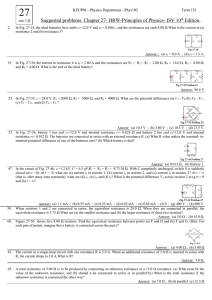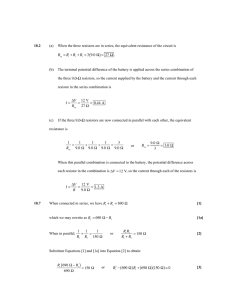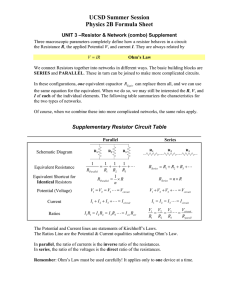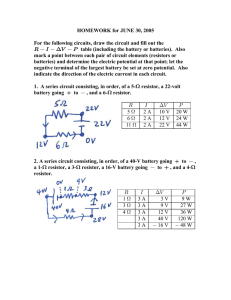SP212‐Spring‐2016 CH‐27‐A Assignment
advertisement
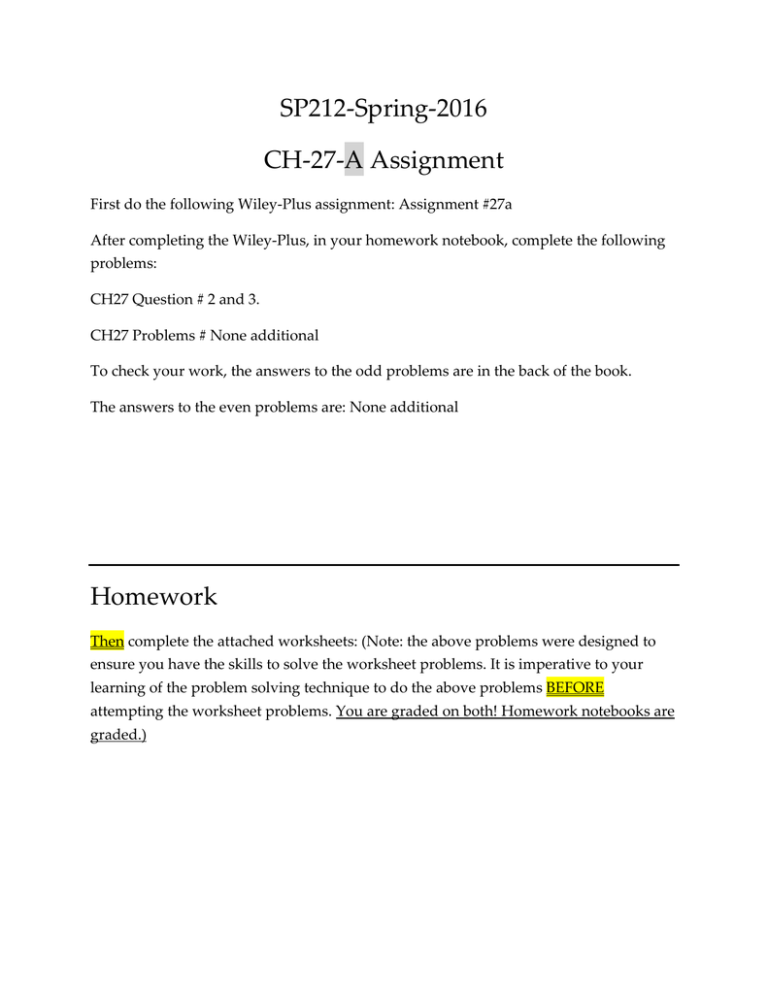
SP212‐Spring‐2016 CH‐27‐A Assignment First do the following Wiley‐Plus assignment: Assignment #27a After completing the Wiley‐Plus, in your homework notebook, complete the following problems: CH27 Question # 2 and 3. CH27 Problems # None additional To check your work, the answers to the odd problems are in the back of the book. The answers to the even problems are: None additional Homework Then complete the attached worksheets: (Note: the above problems were designed to ensure you have the skills to solve the worksheet problems. It is imperative to your learning of the problem solving technique to do the above problems BEFORE attempting the worksheet problems. You are graded on both! Homework notebooks are graded.) CH‐27‐A‐1: For each of the equations below, 1) State what each term is in your own words … 2) What the units of each term are… 3) What is the general use of that equation in your own words? A. E= dW dq B. Pemf i n C. Req R j j 1 D. V ir CH‐27‐A‐2: Figure below shows two real batteries with emfs 1 = 12.0 V and 2 = 4.0 V and internal resistances R1 = 0.50 Ω and R2 = 0.10 Ω, connected to a resistor of resistance R = 2.0 Ω. a. b. What are the terminal‐to‐terminal potentials across battery 1 and battery 2? Are the batteries supplying or absorbing energy, and at what rate? Show all work CH‐27‐A‐3: Figure below shows a circuit with two ideal batteries of emfs 1 = 12.0 V and 2 = 4.0 V and two resistors of resistances R1 = 4.0Ω and R2 = 2.0Ω. One point in the circuit is grounded. What is the potential at point A (or, at any point along the top wire)? Show all work CH‐27‐A‐4: Figure 27‐8a shows a circuit with an ideal battery (of emf = 24.0 V) connected to an arrangement of three resistors in series (R1 = 2.0 Ω, R2 = 4.0 Ω, and R3 = 6.0 Ω). a. What is the potential across resistor 2? b. What is the rate of thermal energy dissipated in resistor 1? Show all work





